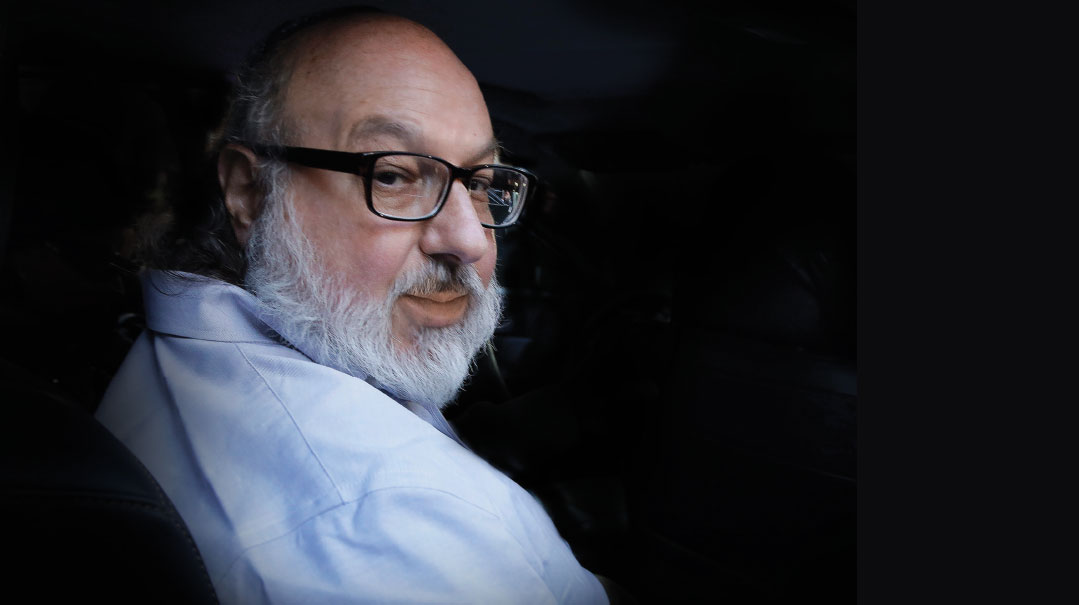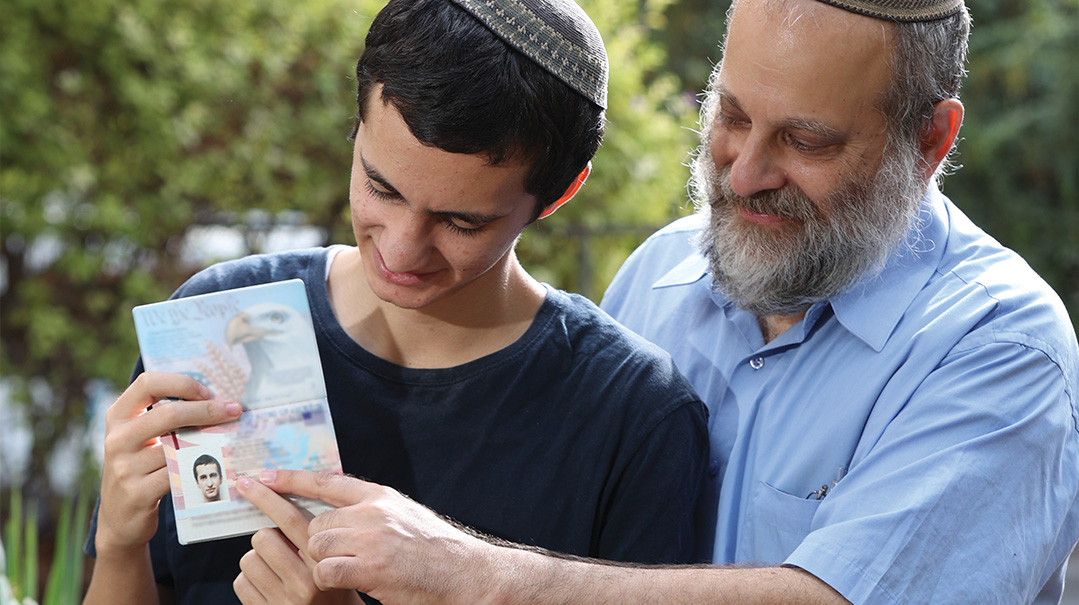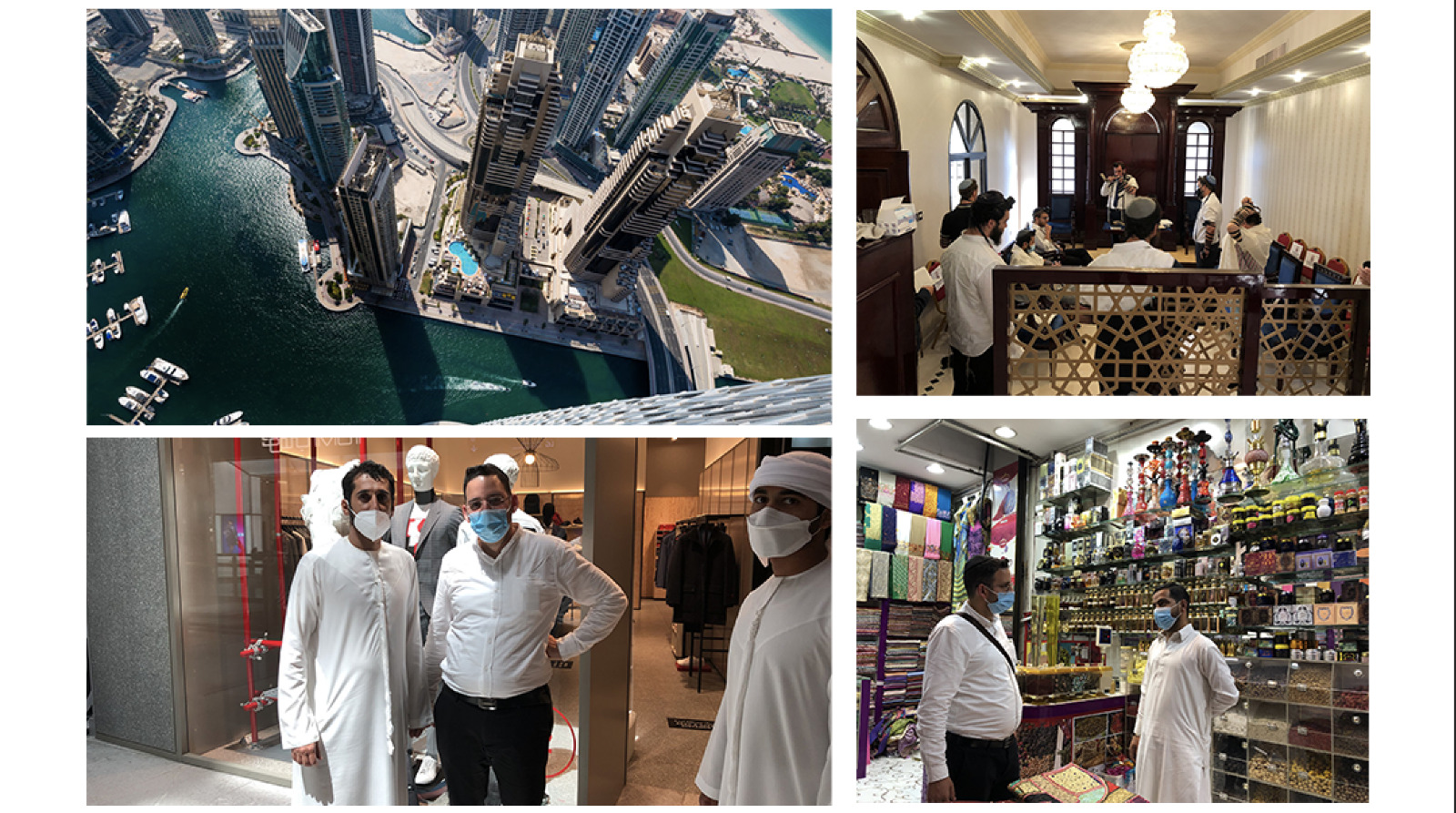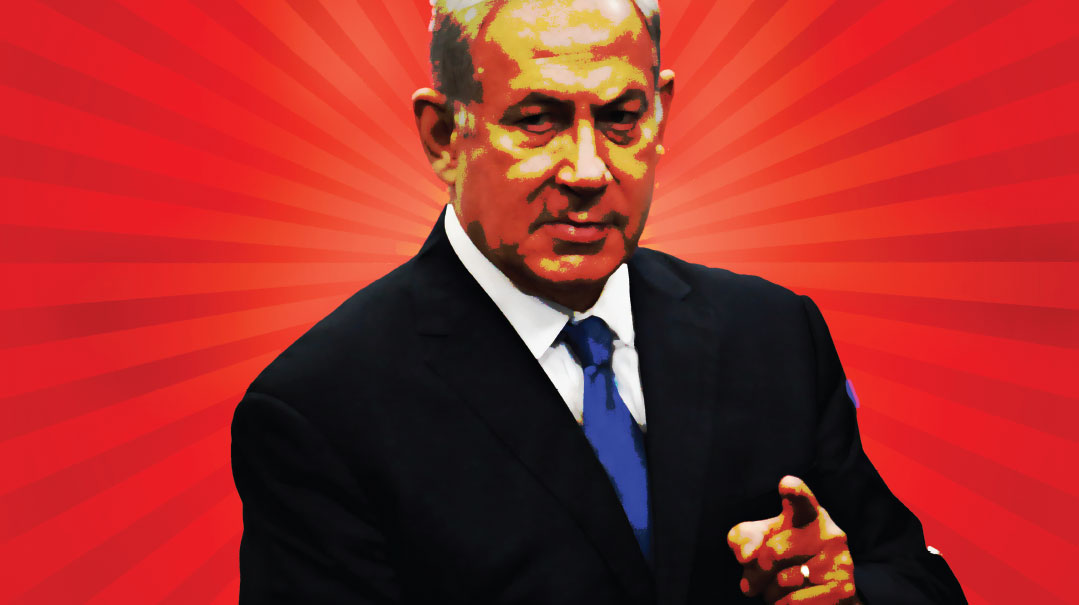Cannabis Turns Over a New Leaf
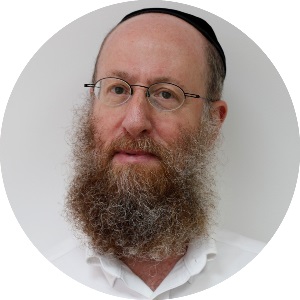

Once regarded solely as a dangerous recreational drug, marijuana has now become a pharmaceutical prescribed widely for pain, nausea, and other ailments. That transition began 50 years ago, when an Israeli scientist decided to study marijuana samples, opening a pathway to what has become a multibillion-dollar industry
D
r. Raphael Mechoulam, one of the world’s leading cannabis researchers, used to get all his marijuana from the police.
It’s true. For many years, a senior officer in the police force supplied Mechoulam with some of the contraband that was collected from smugglers who attempted to bring it in from Lebanon. Mechoulam, a chemist at Rehovot’s Weizmann Institute, took a particular interest in marijuana’s chemical structure.
“I liked doing research on the chemistry of natural substances and to the best of my understanding, the active compounds in marijuana had never been isolated in their pure form and therefore were not available for modern research,” says Dr. Mechoulam, who today is 88 and still active as head of the Medicinal Chemistry Lab at the Hebrew University School of Pharmacy’s Multidisciplinary Center for Cannabinoid Research.
In 1964, Dr. Mechoulam would become the first scientist to isolate THC, marijuana’s psychoactive ingredient, and later on CBD, a non-psychotropic cannabinoid that naturally occurs in the plant. Without even realizing it, Dr. Mechoulam became the father of the medical marijuana industry, an emerging market that accounted for $13 billion in global sales in 2016 and is expected to grow to a $57 billion market by 2026. Israeli scientists and entrepreneurs have taken Mechoulam’s lead and raced ahead. Israel is a global leader in cannabis research and development, with more than 70 companies working in the field. Moreover, even Israel’s government has taken an interest in the chemical properties of the drug, providing medical marijuana to soldiers suffering from post-traumatic stress disorder.
While the risks of recreational marijuana use have been well documented, medical marijuana is a different product altogether. Cultivated in a plant form and produced as a pill, oil, drops, or edibles, medical marijuana products are pharmaceuticals made from cannabis plants and finely tuned to specific ailments. For instance, medical cannabis can benefit cancer patients suffering from nausea, help those who endure muscle spasms due to multiple sclerosis, reduce tremors in Parkinson’s patients, improve sleep for those who suffer from PTSD, and manage chronic pain associated with arthritis, fibromyalgia, and Crohn’s disease. The Orthodox Union (OU) has even provided kosher certification to certain cannabis products, recognizing the health benefits.
And it all started with a little curiosity on the part of a scientist in Rehovot who wanted to know more.
Dr. Mechoulam’s Israeli chutzpah and his team’s scientific expertise paved the way for the discovery of THC and CBD, but it took another 25 years until science, drawing on his research, discovered that the human body itself produces the same chemicals that creates the “high” of the marijuana plant.
Science named this the endocannabinoid system (ECS) — after the cannabis plant that led to its discovery. The ECS is one of the human body’s most crucial physiological systems, reinforcing the central and peripheral nervous systems and buttressing the immune, gastrointestinal, reproductive, and digestive system to maintain internal stability in dealing with an external world of constant disruption.
We now know that recreational use of marijuana throws this delicate system off balance. The THC quickly overwhelms the body’s endocannabinoid system by binding with the body’s own two cannabinoid receptors (CB-1, located mainly in the brain and nervous system and CB-2, found mainly in the immune system). This hinders the body’s natural cannabinoids from doing their job of fine-tuning neural communication, which is why marijuana impairs a person’s reaction time, disrupts short-term memory, causes anxiety, and affects judgment.
That said, the last decade or two of laboratory experiments and clinical trials have shown that by regulating dosages of marijuana’s active ingredients, THC and CBD, cannabis can be manipulated to produce a positive effect on the body’s ECS system and is useful in treating a wide range of disorders that require a healthy ECS. Thus, the “medical marijuana” industry was born.
However, many of these studies are still in their preliminary stages and especially in the United States, federal red tape has kept a tight lid on research. To date, no large-scale clinical trials have been conducted on marijuana. That’s mainly because the US Drug Enforcement Administration (DEA) still classifies marijuana as an illegal Schedule I drug that has no accepted medical use.
It’s a catch-22; without results from clinical studies, the DEA, whose job is to crack down on drug abuse, won’t budge from its position. But that very position is the main impediment toward conducting clinical trials that could lead the US Food and Drug Administration to approve more marijuana-based drugs.
Some brave scientists have begun cutting through piles of federal red tape to conduct medical research. That includes registering with the DEA and ensuring their laboratories comply with strict security protocols. Only then can the researcher apply to an agency such as the National Institute on Drug Abuse (NIDA) to obtain research-grade marijuana, grown only at one US location — at a secure facility supervised by the University of Mississippi.
While Israel and other countries race ahead, it took until June 2018 before the FDA approved the first medication that contains a purified drug substance derived from marijuana — Epidiolex oral solution for the treatment of seizures associated with two rare and severe forms of epilepsy — Lennox-Gastaut syndrome and Dravet syndrome — in patients two years of age and older.
Even though marijuana remains illegal on the federal level, individual states have the authority to decriminalize, or in some cases legalize it, and the federal government has not intervened. Thirty-three states have now passed laws legalizing medical marijuana. According to Business Insider, US consumers spent approximately $10 billion on medical cannabis last year and investors plowed more than $13 billion into companies that produce medical marijuana products.
Israel officially classified marijuana and hashish as dangerous drugs in 1973, but in 2011, the Ministry of Health established the Israeli Medical Cannabis Agency (IMCA) to examine applications, and issue permits to possess, use, and research marijuana. Today, more than 35,000 Israelis have received both doctors’ prescriptions and Ministry of Health licenses to use medical marijuana.
“Israel wrote the roadmap for the medicalization of marijuana. This hasn’t happened in any other place in the world,” says IMCA director Yuval Landschaft. “Our mandate is to support the use of cannabis for medical purposes only while preventing misuse and guarding public safety.”
T
he road to Israel’s medical marijuana industry begins south of Highway 3 in the shfelah, or lowlands southeast of Tel Aviv.
The Revadim industrial zone, home to BOL (Breath of Life) Pharma, is situated across the road from the chareidi yishuv of Beit Chilkiyah and the religious yishuvim of Kibbutz Chofetz Chaim and Yad Binyamin.
“I started this journey five years ago,” says Dr. Tamir Gadu, CEO of BOL Pharma, a world leader in cannabis research and development. “I came from a background in the traditional pharmaceutical industry, so to me, medical marijuana was a placebo. Now I see things differently.”
At first glance, BOL Pharma’s hothouses — white cylindrical tents gleaming in the bright sunlight and swaying slightly in the morning breeze — are indistinguishable from other area farms growing cucumbers or tomatoes. The tight security measures on the premises convey a different story.
Two security vehicles — a golf cart and a truck — escort us through a barbed wire gate. We stop at a greenhouse marked 1B. A sign warns visitors not to touch the plants or photograph the tags used to identify particular strains. To enter the cloning room, visitors wash their hands with antiseptic soap and don a disposable white lab that reminds me of my kittel.
Each plant is genotyped to generate a unique signature, and a proprietary barcode is created to register dosage strengths and foster future breeding. Plants incubate in this initial greenhouse for 12 days, basking in a carefully maintained 74°F at 80 percent humidity, conditions that help the plants take root quickly. Later, the 12-day-old shoots are transferred to a different hothouse, Greenhouse 15, where I must wash again and don a new “kittel” to avoid cross-contamination.
Israel’s stable climate and high year-round ultraviolet light makes the land ideal for growing cannabis, but like a lot of Israeli produce, marijuana is grown indoors, for both security reasons and to foil infestation. The hothouse contains rows of marijuana plants, some taller than me. BOL Pharma’s one-million square feet of cultivation facilities yield three or four crops a year, enough to produce 200 tons of medical cannabis products.
Fully grown plants are cut and brought to a dehydration room, which is kept under a dim light at cooler temperatures (60–64°F) and lower humidity (50 percent). The dried buds and flowers, which closely resemble browned broccoli sprouts, are weighed and packaged in specially marked envelopes for shipment to pharmacies.
Later that day, I arrive at the corporate headquarters of Panaxia, located in Lod, not far from Ben Gurion Airport. Incorporated in 2010, Panaxia produces some 30 different medical marijuana products in different strengths, including tablets, suppositories, inhalers, creams, and ointments. All conform to the GMP (Good Manufacturing Process) pharmaceutical industry standards designed to ensure quality control and consistency.
If I found the “kittel” confining at BOL Pharma, entering Panaxia’s medical laboratories was like scrubbing and dressing for surgery. Inside the research lab, a spectrometer whirs, separating components and tracking the molecules in the THC or CBD to achieve a specific strength of dose.
“This helps us learn how long it takes for the drug to take effect and how long it takes to lose its effect, enabling us to make adjustments,” says Dr. Eran Goldberg, Panaxia’s chief technology officer.
In a second laboratory at Panaxia, the plants are processed to make them into medicine. Here, I must scrub again, and this time be covered from head to toe, including a face mask. This room contains a rotary evaporator, a drying oven, and a freezer set at minus-123 Farenheit, a temperature that would make a polar vortex feel like Miami Beach in comparison. In other words, this is high tech stuff.
Plants are ground into fine particles in two metal bowls, then transferred to a large glass bowl where they are mixed with ethanol, dissolving the active ingredients. The ethanol is then evaporated away leaving behind only the cannabinoids. “During the process, we can change the cannabinoid level so no matter what the purity level, we can have the same outcome,” says Dr. Dadi Segal, Panaxia’s CEO.
Marketed and sold under its Ultra-Health label, Panaxia plays it straight, calling its products simply “medical cannabis oil,” or “concentrate,” a move applauded by Professor Hinanit Koltai, a senior research scientist at the Volcani Center, a project of Israel’s agriculture ministry. The Volcani Center houses the world’s largest gene bank, documenting up to 1,000 cannabis strains, which is available to researchers worldwide.
“When we look into the future, we don’t want to be talking about strains like ‘White Widow’ or ‘American Dream,’ she says, mentioning two exotic names for medical marijuana products. “It detracts from the message, which should be the treatment of diseases, muscle inflammation and atrophy, and for pain management.”
M
eanwhile, across the pond, Len Goodman is a medical marijuana leader in his own right.
Goodman was born in Brooklyn and landed in Santa Fe, New Mexico, in 1971, where he is a member of Santa Fe’s only Orthodox synagogue, Kol Berama. He learns Gemara for 90 minutes a day with his grandson who studies in an Israeli yeshivah. I catch up with Len by phone immediately following his chavrusa.
Goodman’s well-rounded talents range from the artistic to the entrepreneurial. He designed and manufactured hand-crafted decorative tiles and murals and built a retail business with several outlets nationwide. In between, he found time to start an appraisal, brokerage, and consulting business while also producing shows and musicals.
After reading an article in a local Santa Fe newspaper detailing New Mexico’s issuance of its first medical marijuana license, Goodman did his homework and decided this business was for him. He was one of 100 new applicants for five additional state licenses issued in 2009 and was one of the winners.
His company, originally called New Mexicann and since reconstituted as Great Daze, is unique because of its vertical structure — his license allows him to cultivate, manufacture, and dispense medical cannabis.
New Mexico law limits growers to 450 plants, which Goodman cultivates in one outdoor and one indoor facility. He rotates the plantings so that in the summer he has new crops to harvest every two weeks. His manufacturing facilities produce many products, including tinctures and edibles, which he sells to patients with a valid prescription.
Most often, his customers seek medical marijuana for PTSD and chronic pain. “You have to remember, marijuana is herbal medicine. Its effects are subtle. It’s not a sledgehammer or some major pharmaceutical magic bullet,” Goodman says. “It has virtually no toxicity. Aspirin will kill you quicker.
“Patients I work with will use small amounts of cannabis during the day to manage their condition, which means it relieves some of their pain, but they don’t ingest or inhale enough to become impaired,” Goodman continues. “At night, they might triple or quadruple that intake to relieve the pain and it will make them high, but at least they’re at home. For some people, that’s a positive side effect and for others it’s a negative. It’s a question of tradeoffs and you can always control and moderate the dosage.”
Goodman says he has learned of one more major benefit to medical marijuana. “A number of Israeli medics are now carrying medical marijuana products for traumatic brain injuries,” Goodman says. “If someone inhales cannabis shortly after a skull impact, it immediately reduces the swelling in the brain.”
O
ne area where cannabis is making a major difference is in the treatment of autism in children.
Some 50 percent of children with autism spectrum disorder (ASD) suffer from behavioral problems such as tantrums, self-injury, and violence. About 40 percent of such children do not respond well to standard behavioral and medical treatment.
Dr. Adi Aran, director of the Pediatric Neurology Unit at Shaare Zedek Medical Center, is nearing the end of his third clinical trial of medical marijuana for use with autistic children and young adults, ages 5 to 21. His studies have been published in the Journal of Autism and Developmental Disorders, a peer-reviewed medical journal.
“We believe that the cannabis treatment is working because children with autism have a problem with their endocannabinoid system and if we activate this system by giving them cannabinoids, then we can improve their situation,” Dr. Aran says. “This was a surprise for us because there are no pharmacological treatments for the core symptoms of autism.”
Optimistic as he is, Dr. Aran cautions that cannabis is not a miracle treatment for autism.
“It doesn’t cure children from being autistic, but I believe it can be one of the tools in our toolbox, and can help with some behavioral problems, and maybe also the core symptoms, such as the communication deficit in children with autism.”
Rivka Seifert of Mevaseret Zion, the mother of three autistic children ages 17, 9, and 8, participated in Dr. Aran’s clinical trials and can attest to the effectiveness of the medical cannabis.
Doctors prescribed psychiatric medications for her oldest son when he turned ten, but when he began taking sublingual medical cannabis oil two years ago, he could finally reduce the dosage of his other medication. Best of all was his notable behavioral change.
“He used to be very violent with himself,” Mrs. Seifert says. “When he got angry, he would bang his head on the floor and would bleed, or tear out his fingernails, or break thing. He still breaks things sometimes, but not like before. It’s not a 100 percent improvement but I’d say it’s 70 percent better.”
She noted similar positive results with her eight year old who had uncontrollable crying fits that made it almost impossible for her to leave home, even if her husband stayed home to watch him, or to calm him down when she returned. “When he got the cannabis, he still wasn’t able to talk, but he could manage. He wouldn’t cry. He would play. He would approach my husband and he could eat, which was so good for me.”
“Cannabis has two and a half chemicals we understand and hundreds that we don’t,” says Dr. Alan Flashman, a Foxboro, Massachusetts native who was recently named director of the Family Institute at Neve Yerushalayim and treats some 500 autistic children. He finds the best results by treating autistic children mainly with CBD, with a little THC added.
“I have been in pediatrics and child psychiatry for 40 years and there is nothing more satisfying than a parent who comes in and says we’re not suffering from these rage attacks. The frustration seems to melt away in many of these kids,” Dr. Flashman says.
Medical research can still not totally explain why medical marijuana seems to be working on autistic children, but Dr. Flashman theorizes that it improves communication between two different neural centers in the brain. “There are two major ways in which the brain is organized,” he explains. “There is a center, and then how the center communicates with other regions. One is an inner state, like meditation. That’s the brain’s resting state. The other is the executive state which you use to fix your car, or fiddle with the radio. Communication between those two states is almost smooth and almost immediate. That is apparently what is disturbed in autism.”
When the right combination of CBD or THC is administered, Dr. Flashman theorizes the chemicals rebalance the endocannabinoids system. “When the brain has too little of one, and you add it, you’re actually correcting nature, so it’s not working like a drug that is just focused on one molecule,” he says. “You just have to find the correct ratio and then do the fine tuning and these horrible frustration attacks simply disappear.”
It’s only a matter of time until medical marijuana will be legal in all 50 states and prescribed for a variety of ailments. But for now, the small number of clinical studies, along with the reluctance of the US government to allow further study on cannabis products as a pharmaceutical drug, has stymied efforts to use it widely.
In a blog published a year ago at Harvard Health Publishing, Dr. Peter Grinspoon, who is on the staff at Massachusetts General Hospital and teaches at Harvard Medical School, wrote that patients who believe they may benefit from the treatment must approach their physicians and engage in an open and honest discussion.
“Tell them that you consider this to be part of your care and that you expect them to be educated about it, and to be able to at least point you in the direction of the information you need,” Dr. Grinspoon wrote. His advice for doctors is that even though we still lack rigorous studies and “gold standard” proof of the risks and benefits, patients are embracing it and doctors must be nonjudgmental with their patients.
“I often hear complaints from other doctors that there isn’t adequate evidence to recommend medical marijuana, but there is even less scientific evidence for sticking our heads in the sand,” Grinspoon wrote.
For those who like conspiracy theories, or get agitated over Big Pharma, there are rumblings that research into medical cannabis is being held back while the major pharmaceutical companies attempt to develop a chemical or synthetic substitute that mimics the effect of THC and CBD, negating the need for medical marijuana.
I ran this by Israel’s original research pioneer, Dr. Raphael Mechoulam. He said if that scenario comes to pass, it will take quite a long time and will not make a major dent in current consumption.
“The number of people using extracts or pure THC or CBD is enormous,” Dr. Mechoulam says. “For most people, this is a natural compound and they will continue using it.” Like other pharmaceuticals, medical marijuana will undergo stages of development, he says.
“We cannot buy penicillin at the drug store, we buy a derivative that some company has made,” Dr. Mechoulam explains. “Same for hormones. You don’t buy cortisone, you buy a derivative where the doses are formulated to make effects better. So chances are we will have semi-synthetic compounds that take the natural product and make a small change in its molecule. We at Hebrew University have been working with companies and have found some compounds better than CBD itself.”
Boaz Albo, manager of the research and development department at the Israel Medical Cannabis Agency, says there could be many further breakthroughs. More than 250 studies are currently underway in Israel at four university research centers. Some 30 percent of them are in the field of agricultural research to create new, standardized lines of medical products; 10 percent are in development of medical devices including smoking substitutes, vaporizers, and inhalers; and 60 percent of studies focus on biochemistry, pharmacology, and clinical trials.
One of the main concerns is how to avoid abuse, misuse, or addiction, Albo says. “I have read articles saying that ten percent of users become addicted,” he says. As a government regulator, he says the Ministry of Health shares that concern and monitors this carefully through patient follow-up, adding that it has to be viewed on a case-by-case basis.
“If an 80-year-old cancer patient needs cannabis, it’s safe to say that addiction is not going to be his main problem. When physicians look at a patient’s file, they take the risks and benefits into account,” Albo says.
B
ut medical marijuana remains a hard sell, even for those who make the products.
“When I’m sitting in front of doctors, I see them shifting uncomfortably in their chairs,” says Dr. Dadi Segal. He understands that doctors bear a weighty responsibility when prescribing medications and would agree with Dr. Grinspoon’s assessment that the lack of clinical data and trials on specific products are major drawbacks. This leads Dr. Segal to a sober assessment on the future of the industry.
“It will never be a first line of treatment. It will be the last-line alternative after doctors have tried other forms of treatment and none of them worked,” Dr. Segal says.
Miki Ofer, the head pharmacist at BOL Pharma is more optimistic. “We think cannabis will be a medicine. One that provides cures.”
Cures, I ask?
“Let me ask you. If a woman suffers from fibromyalgia from morning until midnight and she takes a couple of drops of cannabis oil under the tongue, and doesn’t suffer the symptoms anymore, isn’t that a cure?”
Hechsher Concerns
Many medical marijuana products are more effective when ingested as one of the ingredients processed into baked goods or candies, especially when prescribed for pain management, or for patients who choose not to smoke or take inhalants.
Observant Jews who take medical marijuana edibles must consume only kosher products, says Rabbi Moshe Elefant, chief operating office of the Orthodox Union’s Kashrus Division.
In 2015, the OU became the first kashrus agency to announce it would certify edible medical marijuana products. The decision initially aroused much controversy. Some people felt the hechsher created an impression that recreational use of marijuana is acceptable. Others worried that products designed for medicinal use would end up in the wrong hands. The OU took these concerns to heart.
“We, as a hashgachah, have to be very sensitive about our reputation, because when it comes to a hechsher your name is your reputation and reliability,” Rabbi Elefant says.
The OU’s first hechsher was granted to Vireo Health of New York, and now that medical marijuana is legal in 33 states, Rabbi Elefant says the OU has been receiving many new requests for kashrus certification. “There are many additives that are used in the production of the final product that contains the marijuana,” he says.
For instance, sometimes an alcohol is used in the extraction process, so the OU has to make sure that alcohol is kosher.
What eventually pushed the OU in the direction of certifying medical marijuana was conversations they held with patients and family members who had prescriptions.
“I personally recall speaking to a very prominent rav in Boro Park whose wife suffers from chronic pain. He said if not for medical marijuana, he was not sure his wife could survive,” Rabbi Elefant said.
Even so, Rabbi Elefant recalls being confronted by a listener on Zev Brenner’s Talkline, a radio program in New York. The topic was Pesach kashrus, but the listener asked how the OU would deal with the responsibility that teenagers might now experiment with marijuana because of the OU.
“I told the caller, we are not in any way condoning or supporting a teenager experimenting with marijuana, but do you believe for one moment that if this teenager did decide to do it, that the hechsher was one of the factors that influenced him? And if it didn’t have the hechsher, they wouldn’t try it? I said I don’t believe the hechsher is going to make the difference
(Originally featured in Mishpacha, Issue 751)
Oops! We could not locate your form.






